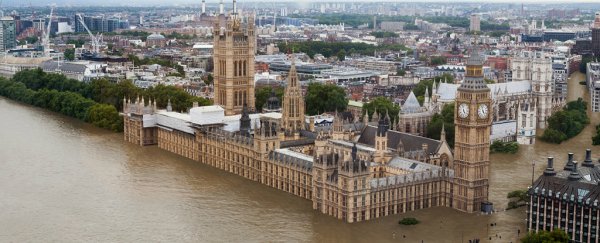Some of the most iconic sites in the world are located in major coastal cities around the globe. And it's no secret these cities stand to be swallowed up by long-term sea level rise, unless we manage to curb carbon pollution.
According to US-based independent research organisation Climate Central, if we don't take any action to reduce greenhouse gas emissions, we can expect a roughly 4°C (8.1°F) increase in global temperature by 2100, compared to pre-industrial times. And, according to its recently published report in PNAS, if carbon pollution is left uncurbed, global sea-levels could rise by 4.3 to 9.9 metres by the end of this century.
This dramatic prediction in temperature rise is usually contrasted with an increase by 2°C (3.6°F), widely regarded as the threshold for avoiding catastrophic climate change - although current emissions reduction goals by countries worldwide do not ensure this target.
"In December, a major new round of global climate talks is being held in Paris. The decisions reached there may have a strong bearing on which of these two scenarios the future looks like most," writes study co-author Benjamin Strauss on Climate Central's website.
Of course, those are all numbers, and we hear them so often that they can lose their meaning. But what would higher sea levels actually look like? Which streets of cities like London or New York will become more like the channels of Venice, and which iconic buildings will be washed away or become home for fish, not humans?
In yet another collaboration with visual artist Nickolay Lamm, scientists have produced imagery that really drives home the message on global warming. The digital renderings are based on Climate Central's interactive project Mapping Choices, which we covered back in October.
Using the sliders below, you can view iconic scenes from Durban, London, Mumbai, Shanghai and other cities around the world, showing the difference in post-2100 water levels depending on how much warmer our planet will get. It might be over a hundred years from now, but there are places in the world which people will only be able to see in historical photographs from our time, because the real deal will be engulfed in water.
Visit Climate Central's website to view more, and check out previous artist renderings here.
Note: these images below are interactive – you can slide the on-screen divider left and right to see how the temperature rise affects each location.
